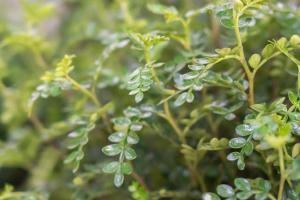How to Apply NPK Fertilizer to Potted Plants
Potted plants are a great way to bring greenery into small spaces and even improve the air quality within a room. However, since the plants are confined to pots, they depend on us to provide them with the necessary nutrients for growth. One essential nutrient for plants is NPK fertilizer, which contains the three macronutrients required for plants: nitrogen, phosphorus, and potassium. Here's how you can apply NPK fertilizer to potted plants:
Step 1: Choose the Right Fertilizer
Before applying fertilizer to your potted plants, you must select the appropriate type of NPK fertilizer. Since different plants have varying nutrient requirements, it's essential to choose a formula that suits the plant's specific needs. You can find the NPK ratio on the fertilizer package. The ratio indicates the proportion of nitrogen, phosphorus, and potassium in the fertilizer. For example, a fertilizer with an NPK ratio of 20-20-20 has an equal measure of each nutrient.
Step 2: Determine the Fertilization Schedule
Another crucial factor to consider before applying fertilizer is the timing. Each plant has a different growing season, and they may have varying requirements for fertilization. It's essential to research the plant's growth habits and follow its fertilization requirements accordingly to ensure optimal growth. Generally, plants require heavier fertilization during the growing season and less during the dormant season.
Step 3: Apply Fertilizer Slowly and Consistently
When you apply fertilizer to potted plants, it's essential to do so gradually, and consistently over time. Over-fertilization can damage your plants, and under-fertilization can cause them to weaken and grow slowly. Follow the package instructions for the appropriate amount of fertilizer depending on the size of your pot and plant. It's crucial to ensure that you don't damage your plants' root system by over-fertilizing.
Step 4: Water Your Plants After Applying Fertilizer
Once you've applied fertilizer to your potted plants, it's essential to water them well. This step is necessary because it enables the soil to absorb the nutrients adequately, thus supporting your plant's growth. Additionally, watering your plant helps to wash away any excess fertilizer that may have accumulated on the plant's leaves or soil surface.
Step 5: Watch Your Plants' Reaction to Fertilizer
Plants respond differently to fertilizer applications. Some may grow more quickly, while others may show evidence of nutrient deficiency. Closely monitor your plant's reaction to the fertilizer, using its leaves and growth as indicators. Suppose you notice that the plants are yellowing, showing signs of burning, or seem to be growing poorly. In that case, you may need to adjust the fertilizer amount or timing.
In Conclusion
Applying NPK fertilizer to potted plants is essential for their growth and overall health. Selecting the right fertilizer and applying it on a consistent schedule in the correct amount is necessary for your plant's optimum growth. Monitoring your plant's reaction to the fertilizer is also crucial to ensure that it's receiving adequate nutrients without being over-fertilized.

 how many times do yo...
how many times do yo... how many planted tre...
how many planted tre... how many pine trees ...
how many pine trees ... how many pecan trees...
how many pecan trees... how many plants comp...
how many plants comp... how many plants can ...
how many plants can ... how many plants and ...
how many plants and ... how many pepper plan...
how many pepper plan...
































